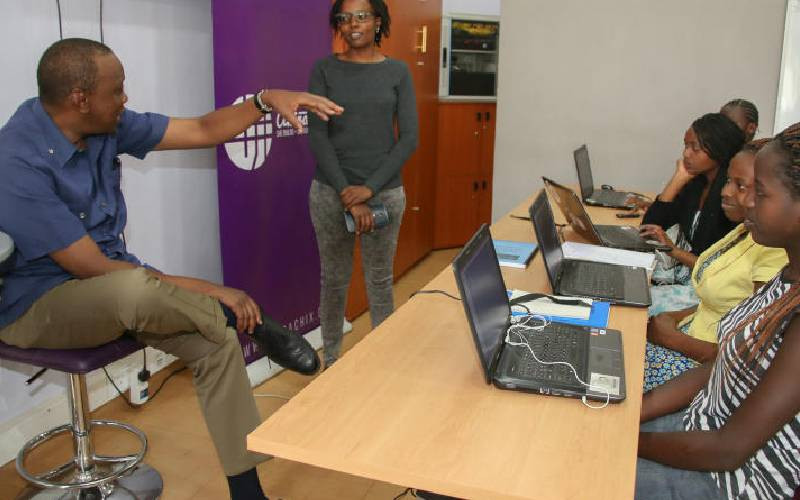Insurance literacy builds trust, mitigates potential conflicts
Opinion
By
Jackson Theuri
| May 12, 2024

Kenyans have, from time immemorial, engaged in various insurance practices ranging from the simple to the highly sophisticated.
The idea was to shield themselves from the impacts of natural disasters which were as common then as they are today. It was common for families to give some of their livestock to relatives and friends residing in faraway locations for safekeeping.
That way, if the family lost their livestock to theft or disease, they would not have to start from zero. They would simply get back what they gave away together with any offspring realised over time. The host family would, during the period they manage the investment, benefit from milk, manure and some of the offspring as agreed with the owner.
Our people also had various insurance practices around crop farming. One of these was selecting the best crop and storing it, usually above the fireplace, to serve as seed in future seasons.
READ MORE
Kenya tops African venture funding in 2024 with Sh82b
Kenya to legalise cryptocurrencies, says Treasury Cabinet Secretary
Mombasa port handled record 41.1m tonnes of cargo in 2024
KenGen to ramp up geothermal output with Hell's Gate project
Impact of Gen Z protests ripples through real estate
Why Sh1.4b cruise ship terminal is yet to bear fruit for Kenyans
Tax Laws Act ushers in new era for pensions sector
New Year pain for consumers as fresh round of taxes kick in
The idea of keeping the selected seeds in the rafters above the fireplace was that it was the safest place where mold and pests would not attack the critical investment. Where a crop failure happened due to drought, locusts, or worms, at least families would have seed for the next planting season.
Insurance, therefore, is not a foreign concept to Africans in general and Kenyans in particular. It was, and remains, part of the African political economy.
Despite this, insurance uptake remains so low it should worry us all. Statistics from 2022 indicated the national insurance penetration rate stood at 2.29 per cent against the global penetration rate of 6.7 per cent.
Low uptake
According to the 2021 FinAccess national survey and the Kenya Demographic and Health Survey 2022, only one out of four Kenyans has access to health insurance, a 16 per cent drop compared to 2019.
Further, most Kenyans (71 per cent) cited lack of affordability as the reason for low health insurance uptake, followed by lack of knowledge and awareness (about 20 per cent).
Although these studies were specific to health insurance coverage, they mirror the state of insurance coverage in general.
There are two lessons that can be drawn from these studies. The first is that we need concerted education across all demographics to reach those who have no knowledge of insurance and remind those who have knowledge about what is available in the market.
Without the right knowledge, individuals and families can’t make informed decisions and, as a result, may be found unprepared in time of loss or emergency.
Therefore, it is imperative for stakeholders in the insurance sector to educate Kenyans on available insurance options, dispelling misconceptions surrounding this vital industry.
The second lesson is to address the affordability challenge. There are many Kenyans whose incomes are low and are therefore unable to access insurance. On this, the industry needs to be more innovative, developing products for low-income demographics that can be profitable by leveraging numbers.
A lot of innovation is ongoing in the industry, and we now have policies that are flexible and unique in their approach.
For instance, small-scale tea farmers are known to receive bulk payment once or twice a year. Premium payment for this demographic can be once or twice a year instead of monthly.
There are also small traders commonly referred to as mama mboga who make small profits on a daily or weekly basis. This demographic can do better if allowed to pay premiums weekly or even daily.

